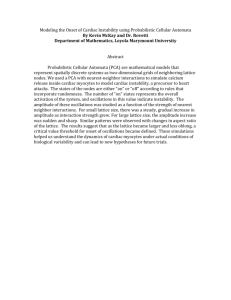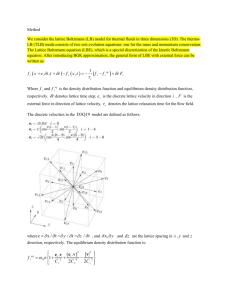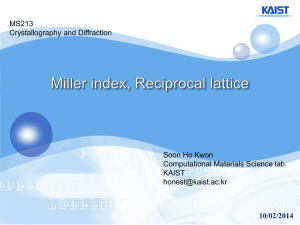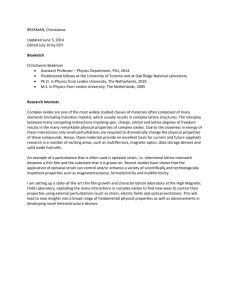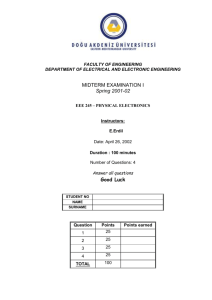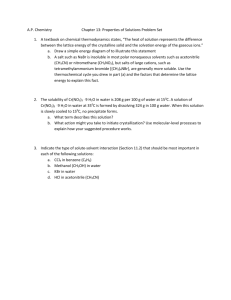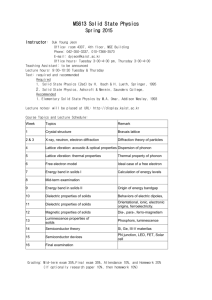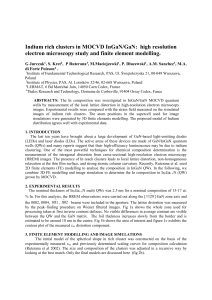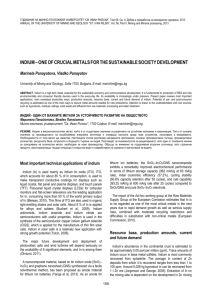View
advertisement
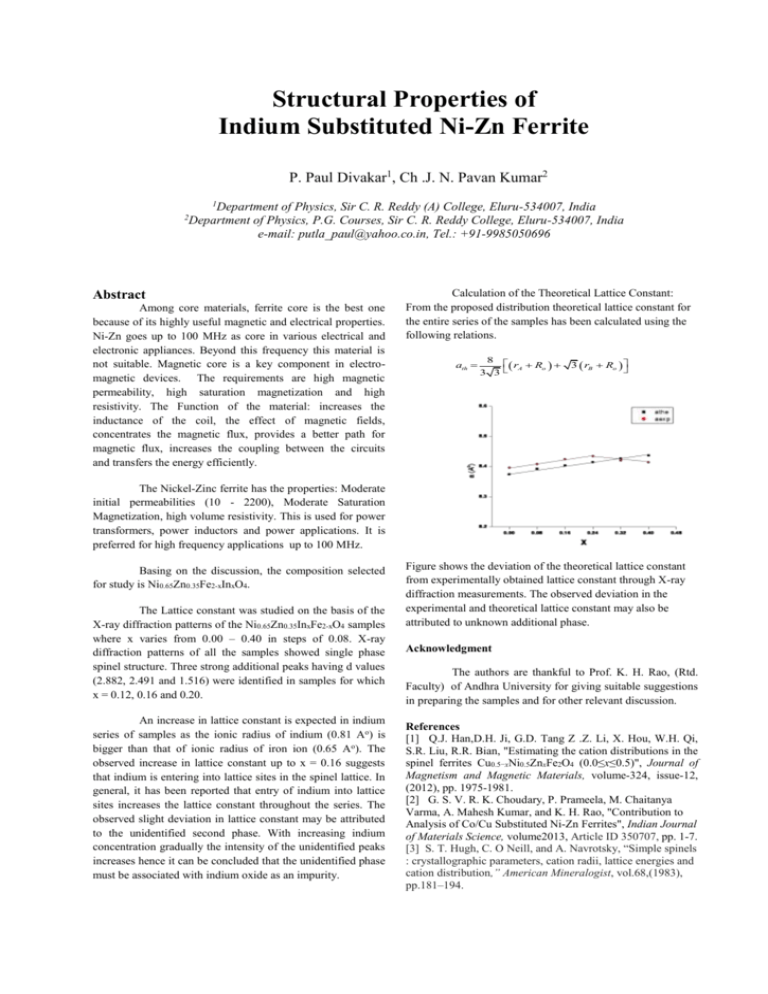
Structural Properties of Indium Substituted Ni-Zn Ferrite P. Paul Divakar1, Ch .J. N. Pavan Kumar2 1 Department of Physics, Sir C. R. Reddy (A) College, Eluru-534007, India Department of Physics, P.G. Courses, Sir C. R. Reddy College, Eluru-534007, India e-mail: putla_paul@yahoo.co.in, Tel.: +91-9985050696 2 Abstract Among core materials, ferrite core is the best one because of its highly useful magnetic and electrical properties. Ni-Zn goes up to 100 MHz as core in various electrical and electronic appliances. Beyond this frequency this material is not suitable. Magnetic core is a key component in electromagnetic devices. The requirements are high magnetic permeability, high saturation magnetization and high resistivity. The Function of the material: increases the inductance of the coil, the effect of magnetic fields, concentrates the magnetic flux, provides a better path for magnetic flux, increases the coupling between the circuits and transfers the energy efficiently. Calculation of the Theoretical Lattice Constant: From the proposed distribution theoretical lattice constant for the entire series of the samples has been calculated using the following relations. ath 8 rA Ro 3 3 3 rB Ro The Nickel-Zinc ferrite has the properties: Moderate initial permeabilities (10 - 2200), Moderate Saturation Magnetization, high volume resistivity. This is used for power transformers, power inductors and power applications. It is preferred for high frequency applications up to 100 MHz. Basing on the discussion, the composition selected for study is Ni0.65Zn0.35Fe2-xInxO4. The Lattice constant was studied on the basis of the X-ray diffraction patterns of the Ni0.65Zn0.35InxFe2-xO4 samples where x varies from 0.00 – 0.40 in steps of 0.08. X-ray diffraction patterns of all the samples showed single phase spinel structure. Three strong additional peaks having d values (2.882, 2.491 and 1.516) were identified in samples for which x = 0.12, 0.16 and 0.20. An increase in lattice constant is expected in indium series of samples as the ionic radius of indium (0.81 Ao) is bigger than that of ionic radius of iron ion (0.65 Ao). The observed increase in lattice constant up to x = 0.16 suggests that indium is entering into lattice sites in the spinel lattice. In general, it has been reported that entry of indium into lattice sites increases the lattice constant throughout the series. The observed slight deviation in lattice constant may be attributed to the unidentified second phase. With increasing indium concentration gradually the intensity of the unidentified peaks increases hence it can be concluded that the unidentified phase must be associated with indium oxide as an impurity. Figure shows the deviation of the theoretical lattice constant from experimentally obtained lattice constant through X-ray diffraction measurements. The observed deviation in the experimental and theoretical lattice constant may also be attributed to unknown additional phase. Acknowledgment The authors are thankful to Prof. K. H. Rao, (Rtd. Faculty) of Andhra University for giving suitable suggestions in preparing the samples and for other relevant discussion. References [1] Q.J. Han,D.H. Ji, G.D. Tang Z .Z. Li, X. Hou, W.H. Qi, S.R. Liu, R.R. Bian, "Estimating the cation distributions in the spinel ferrites Cu0.5−xNi0.5ZnxFe2O4 (0.0≤x≤0.5)", Journal of Magnetism and Magnetic Materials, volume-324, issue-12, (2012), pp. 1975-1981. [2] G. S. V. R. K. Choudary, P. Prameela, M. Chaitanya Varma, A. Mahesh Kumar, and K. H. Rao, "Contribution to Analysis of Co/Cu Substituted Ni-Zn Ferrites", Indian Journal of Materials Science, volume2013, Article ID 350707, pp. 1-7. [3] S. T. Hugh, C. O Neill, and A. Navrotsky, “Simple spinels : crystallographic parameters, cation radii, lattice energies and cation distribution,” American Mineralogist, vol.68,(1983), pp.181–194.


